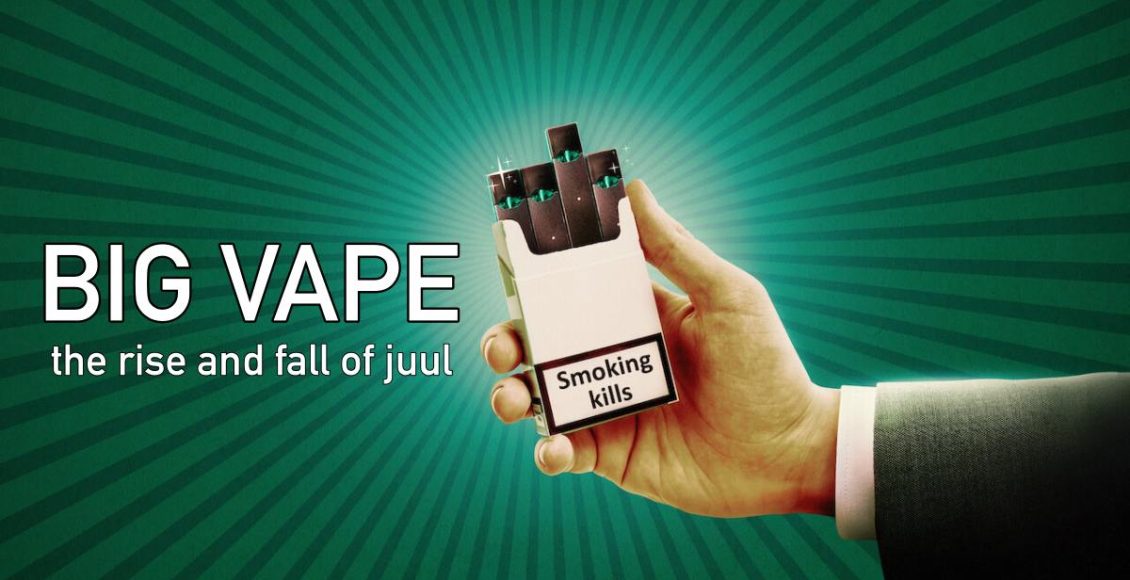[Big Vape: The Rise and Fall of Juul Review] Start up an electronic cigarette that becomes a disaster in the IT industry.

Big Vape: The Rise and Fall of Juul
Summary
In summary, the series presents the rise of the electronic cigarette from its innovative beginnings, its impact on the tobacco industry, and its success in terms of both trends and technology. However, it fails in the market aspect when the user base skews more towards youth than adults, ultimately succumbing to corporate acquisition. It becomes a significant piece of technology history, delivering an engaging and up-to-date presentation through animated sequences. Nevertheless, the series does not directly address the drawbacks of e-cigarettes, as the information on this topic remains somewhat ambiguous and insufficient for definitive judgment.
Overall
7/10User Review
( votes)Pros
- The complete inception of electronic cigarettes from the start.
- In-depth insights from industry insiders.
- Entertaining presentation through animated sequences.
Cons
- Doesn’t explicitly pinpoint the drawbacks directly.
- The creators of Juul are not directly involved in the show.
ADBRO
Big Vape: The Rise and Fall of Juul The Netflix miniseries with 4 episodes from the United States tells the story of the birth of the e-cigarette from Silicon Valley, created to challenge traditional tobacco giants. It was highly successful in terms of sales, but was eventually taken over by the Marlboro company.

Big Vape: The Rise and Fall of Juul Review
The documentary series depicts the origins of the ubiquitous electronic cigarette that we see worldwide today. Although it may seem straightforward, it was backed by extensive research and development from its humble beginnings. It all started with the original idea of two creators, James and Adam, former students of Stanford, back in 2003. They harnessed cutting-edge technology to create a product that aimed to eliminate the drawbacks of traditional cigarettes. Their inspiration came directly from Steve Jobs during that era, and they envisioned their product to be like the iPod or iPhone, both in terms of design and quality. Their goal was to revolutionize the old tobacco industry, and this idea united their company’s employees, leading to incredible success.
However, their success became problematic when the original mission clashed with what they had eventually accomplished.
 The conflict lay in the idea of creating a sleek and convenient product that could be used anywhere to lure cigarette smokers to try it. The marketing strategy was attractive, with a focus on innovative tech product advertising. However, this marketing approach led to younger individuals, under the age of 18, taking up e-cigarettes, even though the problem of underage smoking had almost vanished in the United States (with underage drinking being a more significant concern). This was because traditional cigarettes had largely become associated with an older demographic. In this scenario, Juul managed to create a new problem, much like releasing a genie from a bottle that couldn’t be controlled. The creators themselves were aware of this issue but couldn’t address it, as it was directly linked to their skyrocketing sales, primarily driven by young consumers. Eventually, Marlboro acquired a significant stake in the company, and various legal cases followed, mainly due to the product not receiving FDA approval, as well as misinformation and cover-ups.
The conflict lay in the idea of creating a sleek and convenient product that could be used anywhere to lure cigarette smokers to try it. The marketing strategy was attractive, with a focus on innovative tech product advertising. However, this marketing approach led to younger individuals, under the age of 18, taking up e-cigarettes, even though the problem of underage smoking had almost vanished in the United States (with underage drinking being a more significant concern). This was because traditional cigarettes had largely become associated with an older demographic. In this scenario, Juul managed to create a new problem, much like releasing a genie from a bottle that couldn’t be controlled. The creators themselves were aware of this issue but couldn’t address it, as it was directly linked to their skyrocketing sales, primarily driven by young consumers. Eventually, Marlboro acquired a significant stake in the company, and various legal cases followed, mainly due to the product not receiving FDA approval, as well as misinformation and cover-ups.

The series meticulously details this issue, even though the two creators are not directly involved in the production, with only their images and voices portrayed in various media. However, several members of the Juul team provide undisclosed information, preserving their anonymity by offering only their voices. This prompted the creators to illustrate the events as animated sequences, fitting well with the show’s style.
The creators were overly confident in their technology, disregarding the other issues the tobacco industry had faced before, such as marketing cigarettes to children, which was essentially a repetitive mistake. Although it seemed like they triumphed by significantly reducing traditional cigarette sales to the point that even Marlboro couldn’t resist buying shares in anticipation of a future where people would switch to e-cigarettes, it ultimately led the team to the real goal of the company. They also faced several lawsuits, with Juul agreeing to pay $1.7 billion in compensation in mid-2023, causing uncertainty about the company’s future and whether this could be the future of the tobacco industry.
As for the potential harms of nicotine in e-cigarettes, The series makes an effort to consistently incorporate this storyline throughout its duration. While there was a period when many children were hospitalized due to e-cigarette use, the series suggests that this may have been related to products other than Juul. However, it doesn’t provide a definitive answer and leaves room for uncertainty, as it offers only a brief response.
Furthermore, the long-term health data for Juul users, who have used the product for less than a decade, is still limited. This means that the series doesn’t provide clear and definitive answers regarding the potential dangers of e-cigarettes. It cannot be directly relied upon for this aspect of the issue.
In summary, the series presents the rise of the electronic cigarette from its innovative beginnings, its impact on the tobacco industry, and its success in terms of both trends and technology. However, it fails in the market aspect when the user base skews more towards youth than adults, ultimately succumbing to corporate acquisition. It becomes a significant piece of technology history, delivering an engaging and up-to-date presentation through animated sequences. Nevertheless, the series does not directly address the drawbacks of e-cigarettes, as the information on this topic remains somewhat ambiguous and insufficient for definitive judgment.


